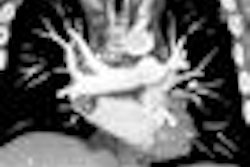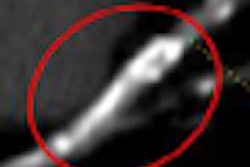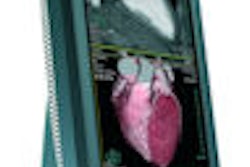VIENNA - With hopes of improving the user experience of handling image CDs, the Integrating the Healthcare Enterprise (IHE) initiative will soon be publishing new extensions to its Portable Data for Imaging (PDI) integration profile and a new Basic Image Review profile, according to a presentation Monday at the European Congress of Radiology (ECR).
The IHE radiology technical committee is working on revisions to the PDI specification to address perceived shortcomings, such as issues deriving from uncompressed CDs, support for new media types, a privacy protection option, and a "sending software" option, said Marco Eichelberg, Ph.D., of Oldenburg Research and Development Institute for Information Technology Tools and Systems.
In the current PDI profile, uncompressed CDs are too small and too slow for some cases, including very large cross-sectional datasets (such as from PET/CT and functional MRI) and very large images such as from mammograms, he said. In addition, the profile currently offers no means of privacy protection. CD viewers also are not standardized, and there is divergence between the PDI specification and several national specifications, Eichelberg said.
The new extensions will be defined as options to maintain backward compatibility, he noted.
Support for new media types will include recordable DVD media as well as USB memory devices, Eichelberg said. The extensions will also provide accommodation for lossy compression (only if the original image was lossy-compressed) and lossless compression, as well as support for both JPEG and JPEG 2000.
The new privacy protection extension will mandate that all DICOM files be encrypted, as well as other files if they contain patient information, he said. The encryption key will be password-based and feature Advanced Encryption Standard (AES) encryption (128 or 256 bit).
The extension also requires a "sending software" option, that allows recipients to utilize the disk even if they don't have specific software to support encrypted DICOM CDs, he said. It also allows the software to run from the CD without requiring installation or administrative privileges.
It also supports decryption and compression, conversion of unsupported service-object pair (SOP) classes to fallback defaults, and reconciliation of identifiers, according to Eichelberg.
The extensions will have limitations, however, he noted. Although it recommends the inclusions of reports, the PDI profile does not mandate it.
The PDI profile does also not restrict the file format of the report. Different options exist today, including DICOM reports, IHE Cross-Enterprise Document Media Interchange (XDM), a Web page, or a file somewhere located on the CD, Eichelberg said.
"Right now we do not have a perfect solution for putting reports on a CD," he said.
The profile will also continue to neither mandate nor prohibit the presence of a viewing application on the CD. In addition, no requirements for viewer features are specified, he said.
Basic Image Review
Fortunately, viewer issues will be covered under a separate profile, Basic Image Review (BIR).
"What you probably really want as a radiologist is a CD that supports the new PDI extensions, by and large, plus the Basic Image Review option," Eichelberg said.
The Basic Image Review profile aims to provide sufficient display functionality to allow adequate review of images for the purpose of clinical decision-making by ordering physicians, he said. It also defines requirements for a basic viewing application that may be locally stored or contained on a CD. When the BIR profile is included in a storage medium, additional requirements will apply.
Both the PDI extensions and the BIR profile are expected to be published as a draft for public comment soon, hopefully this month, Eichelberg said.
"If everything proceeds as planned, these new profiles will be published this summer and first implementations can be tested in early 2010," he said.
A North American IHE Connectathon is tentatively scheduled for February 2010, with a European version to take place in April 2010.
By Erik L. Ridley
AuntMinnie.com staff writer
March 9, 2009
Related Reading
Testing procedure improves usability of DICOM CDs, January 22, 2007
IHE's Import Reconciliation Workflow eases portable media handling, July 17, 2006
Handling priors and the 'portable patient': A case for inter-PACS communication, November 16, 2005
Copyright © 2009 AuntMinnie.com



















